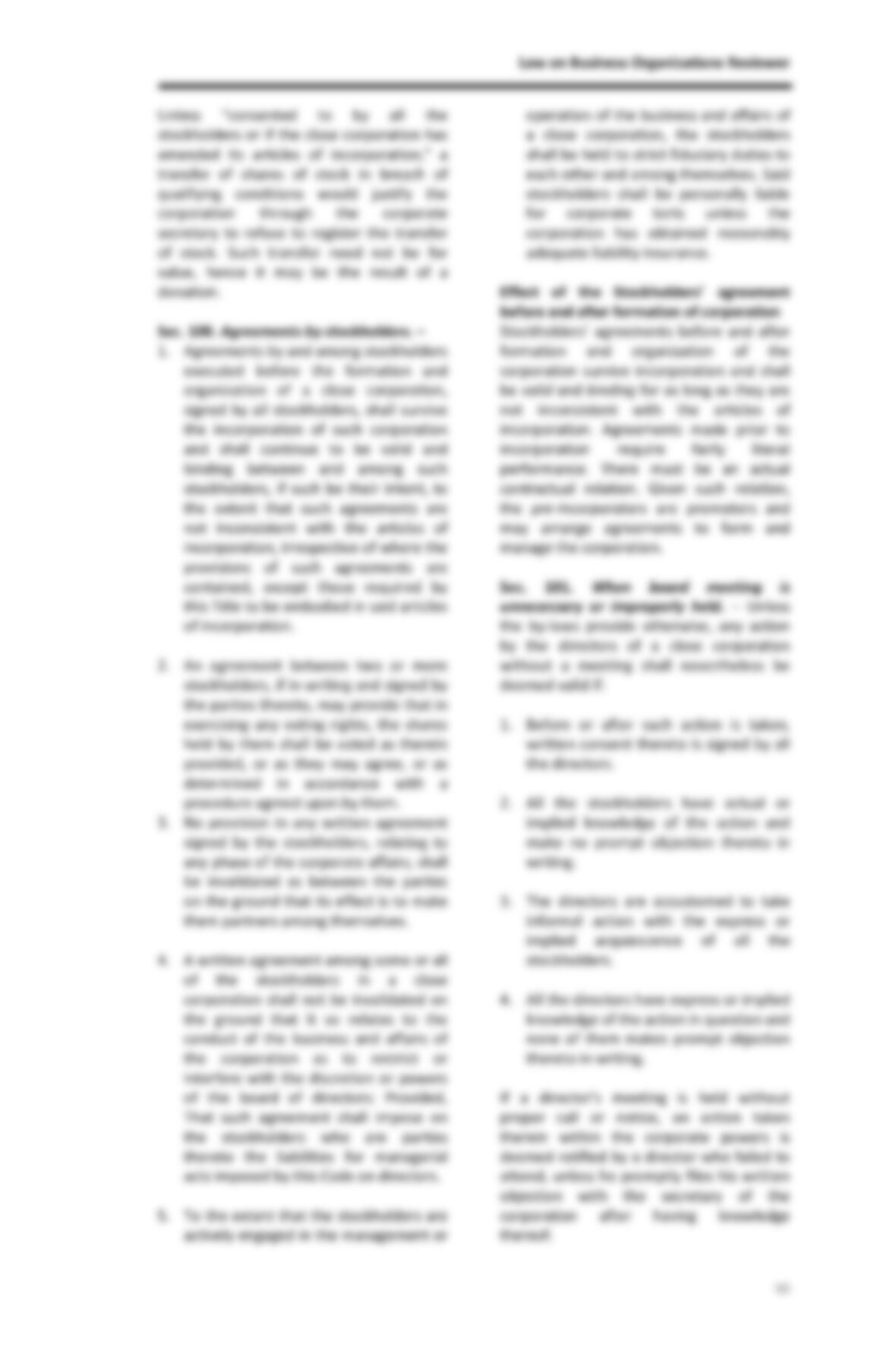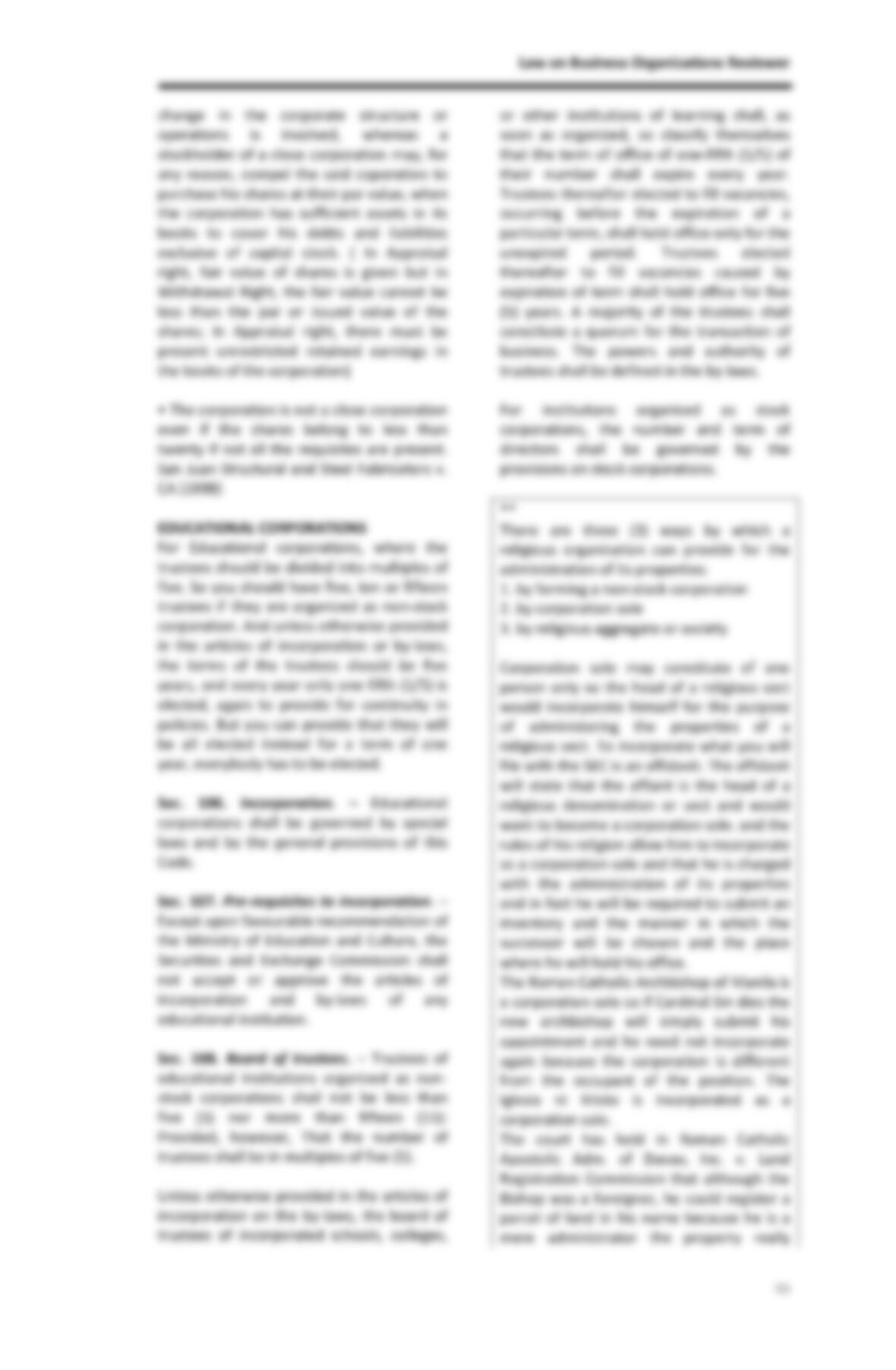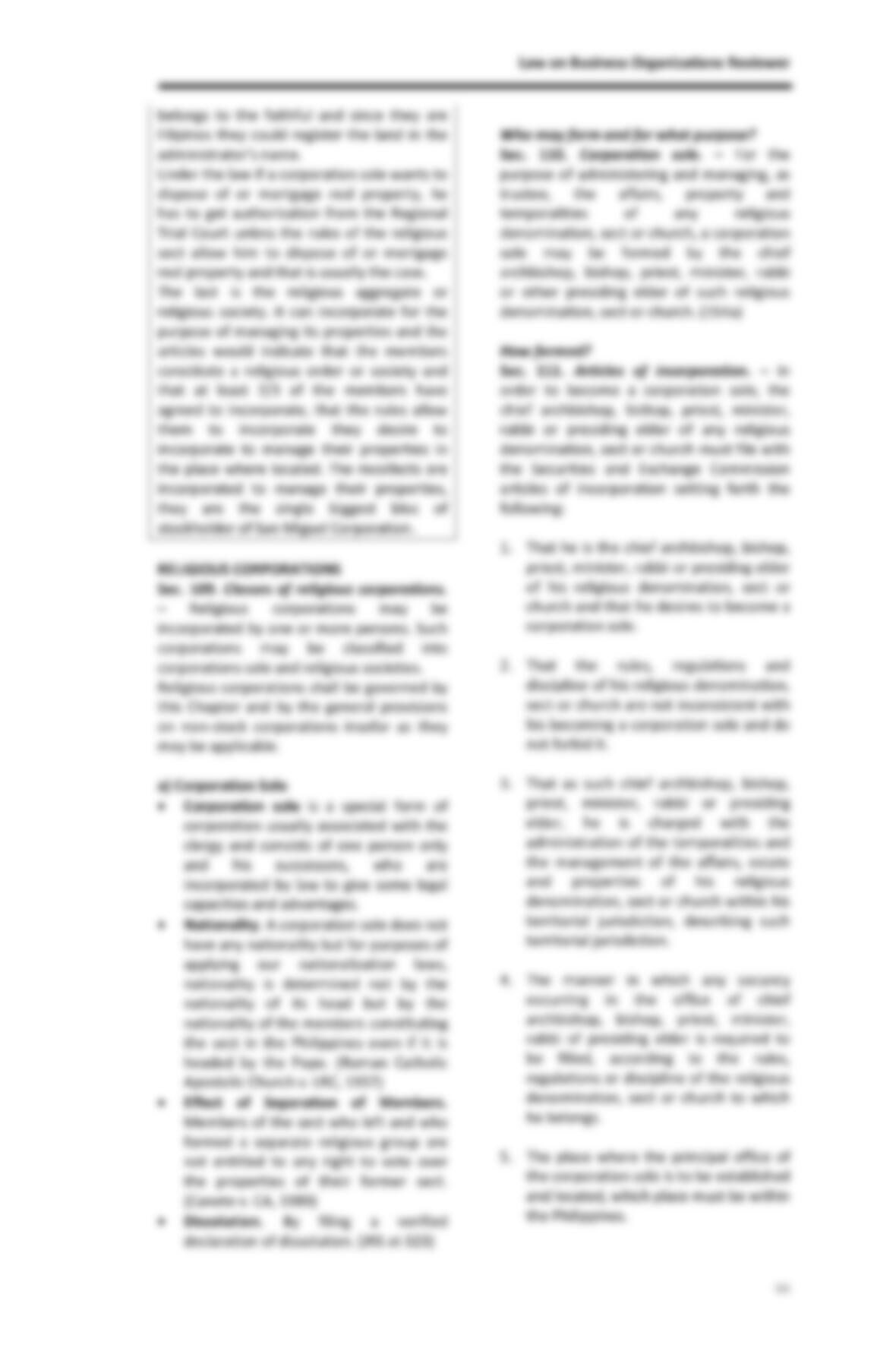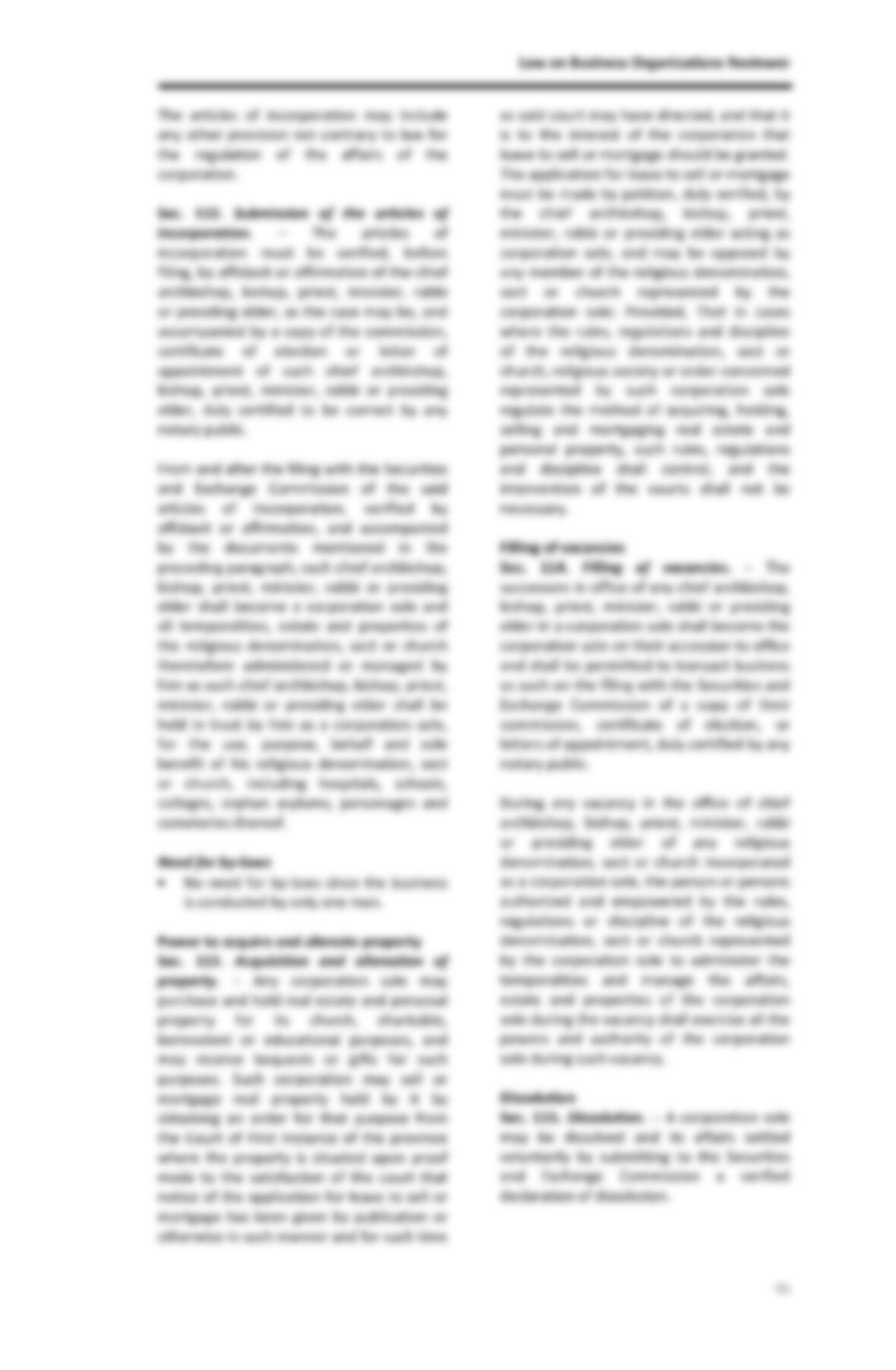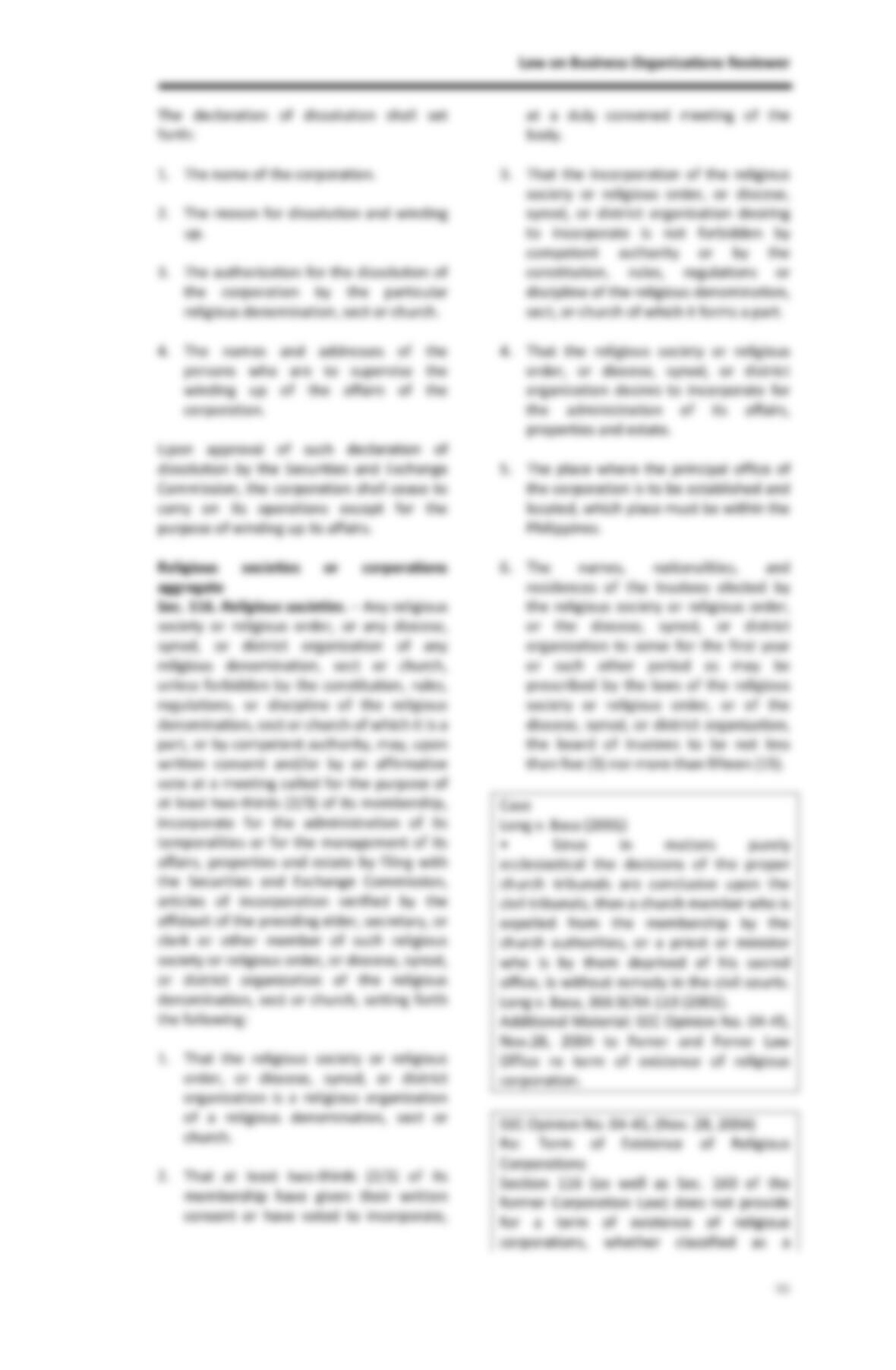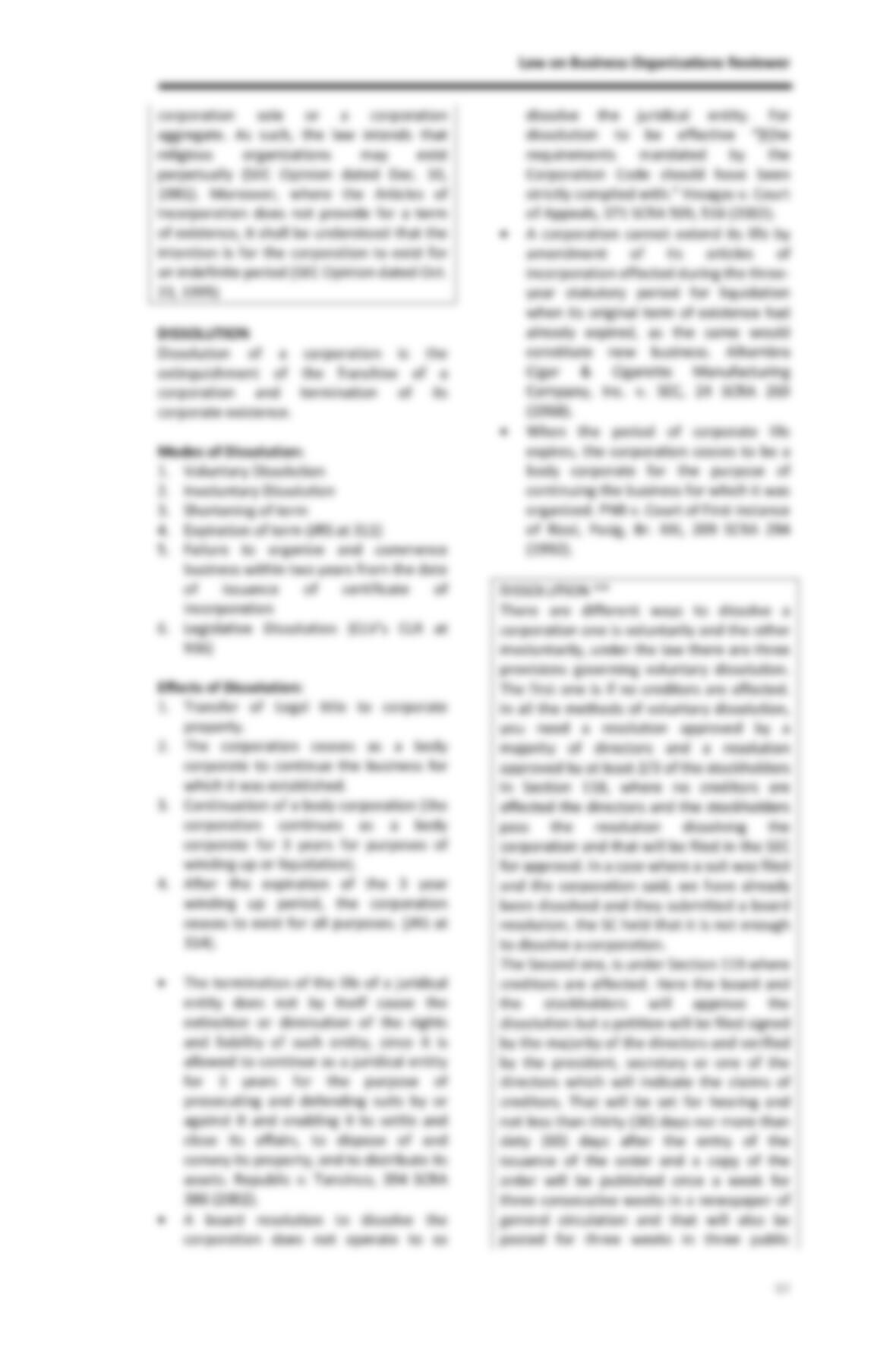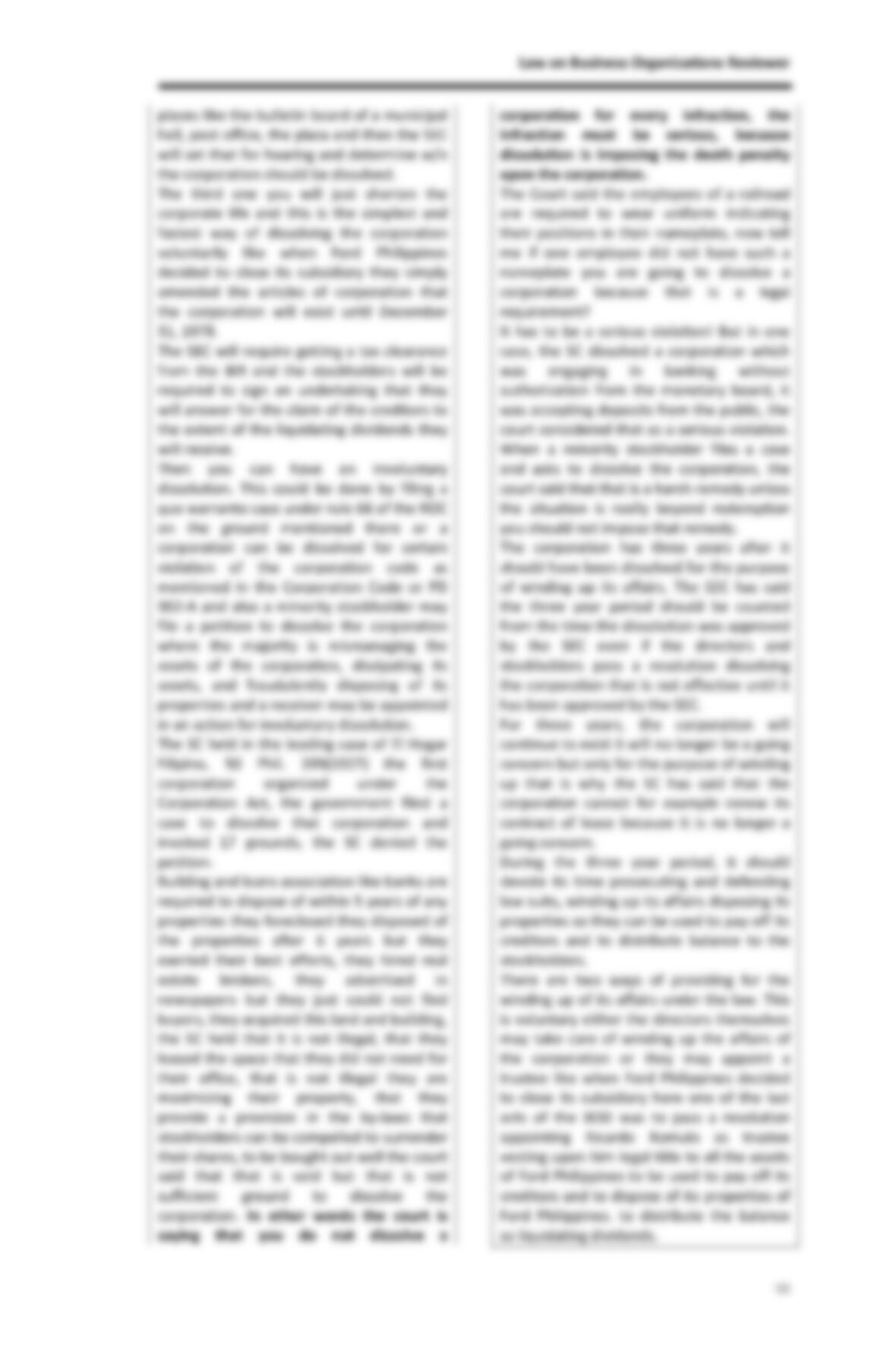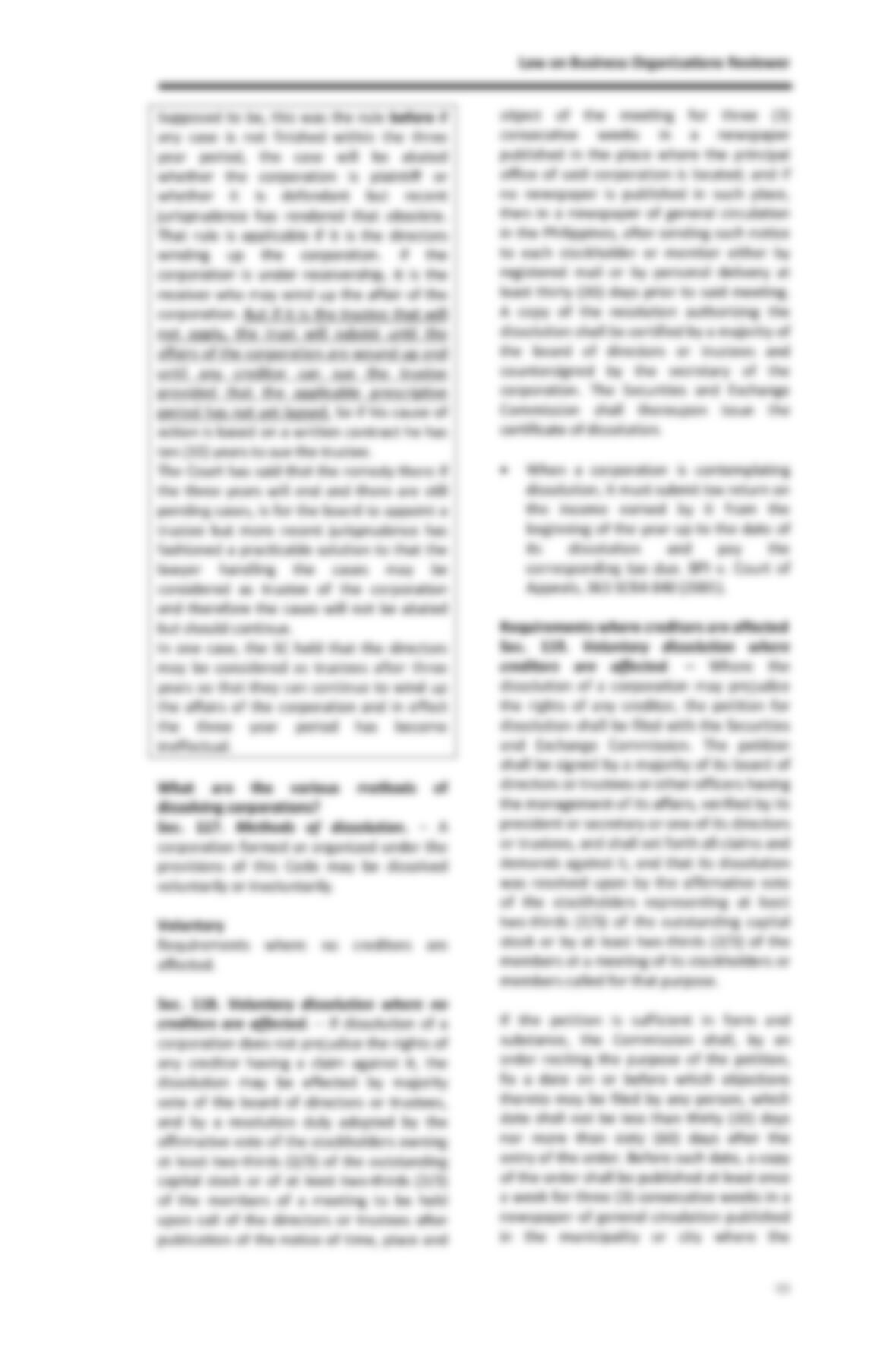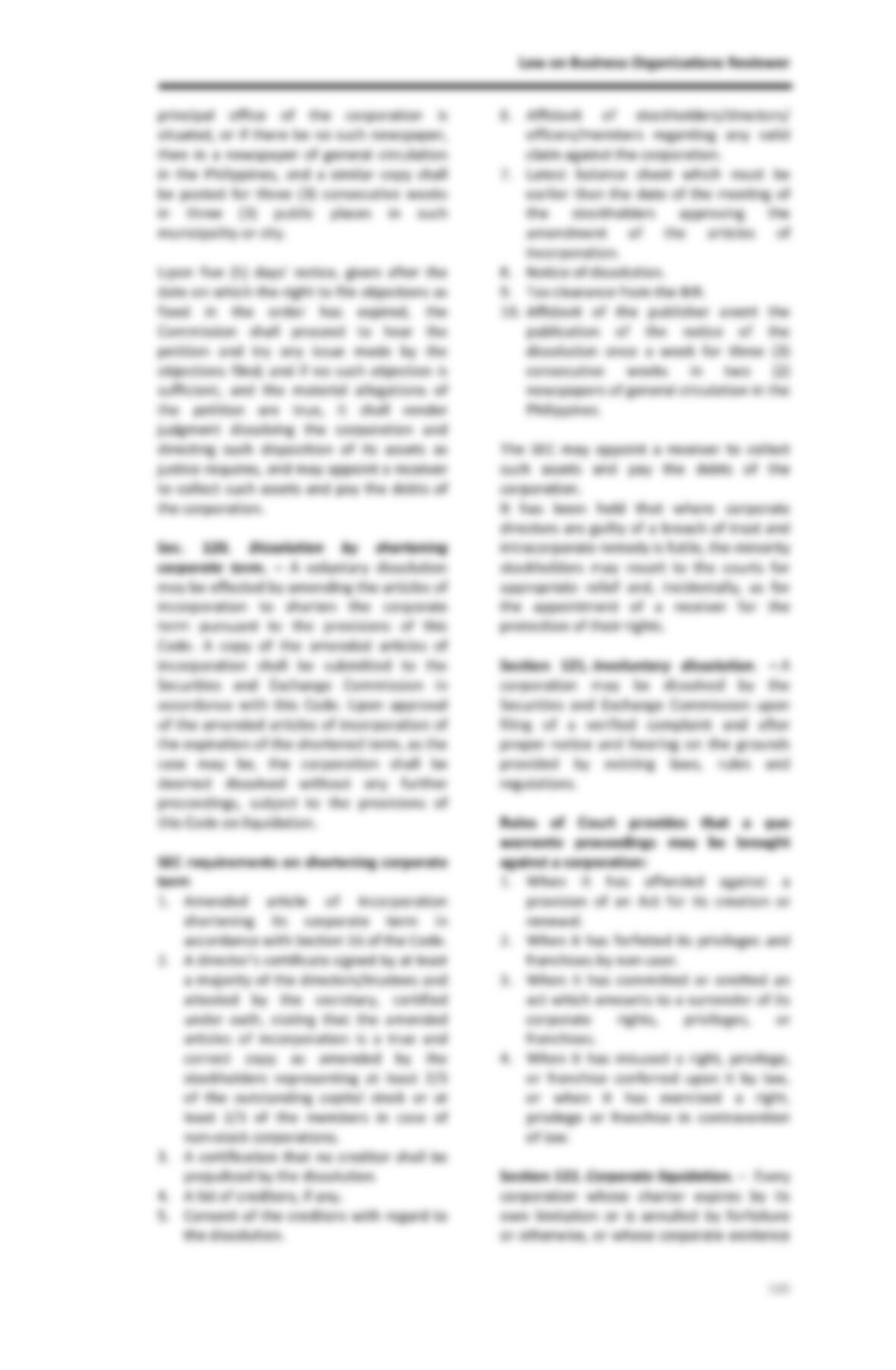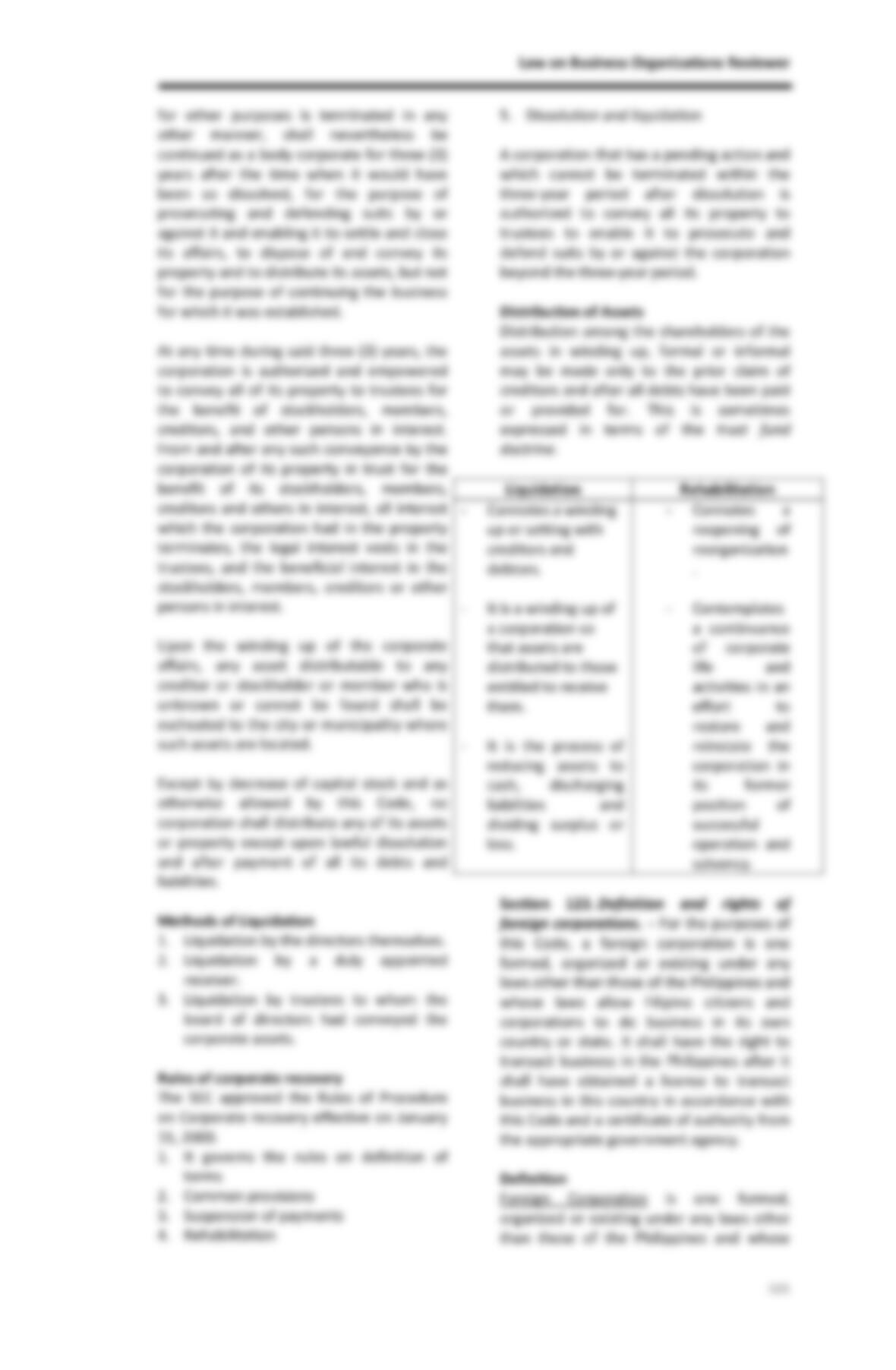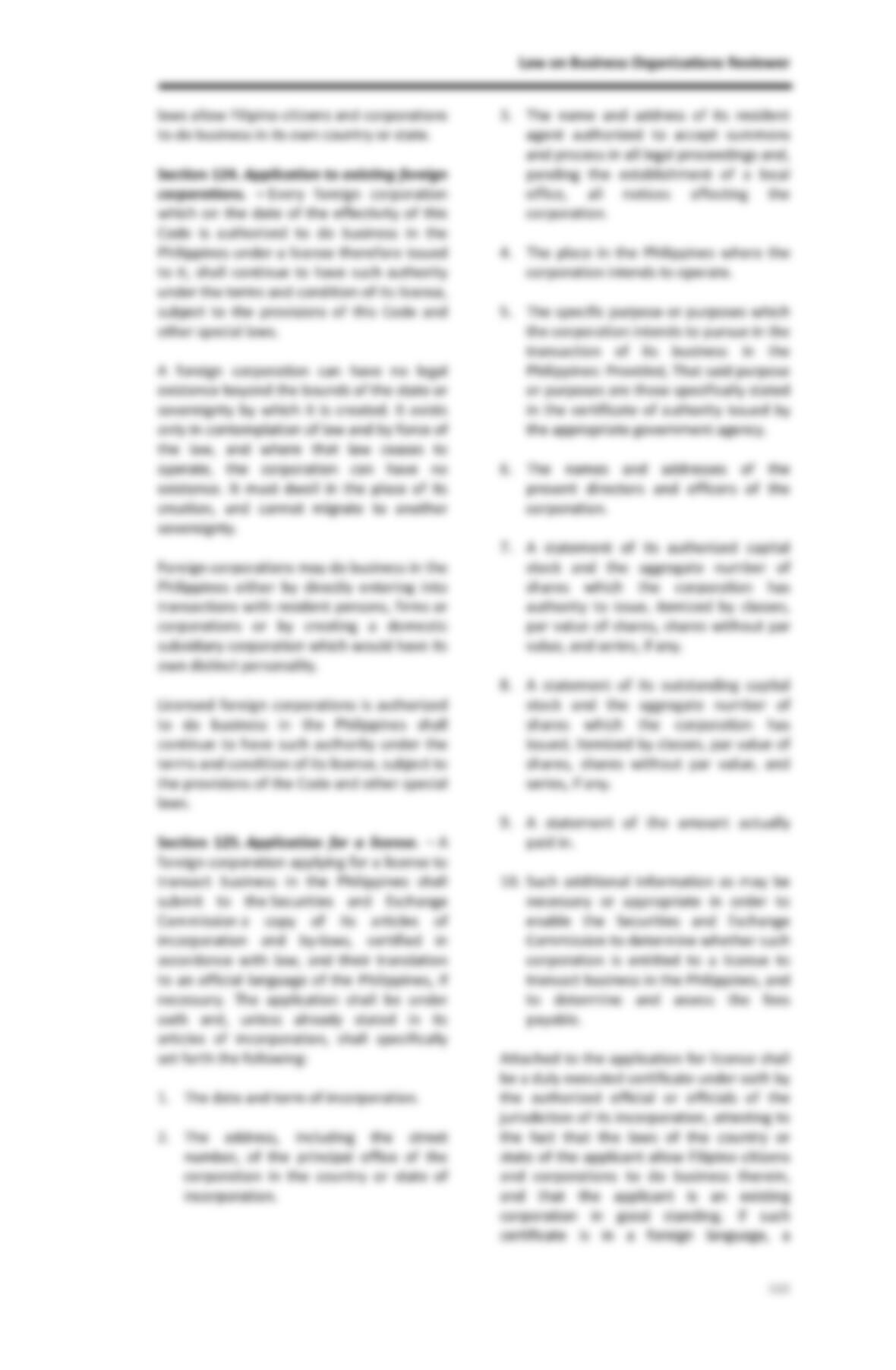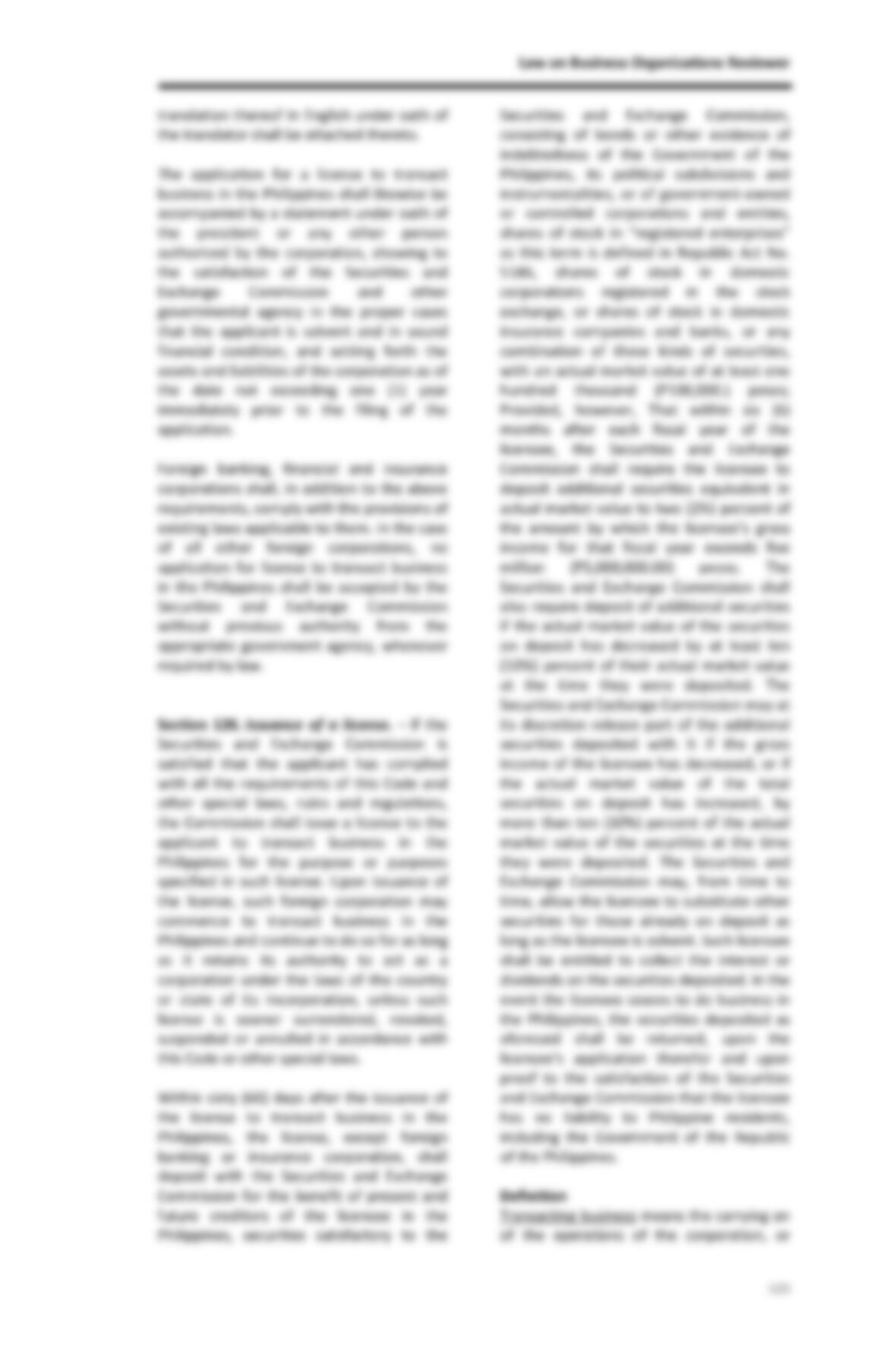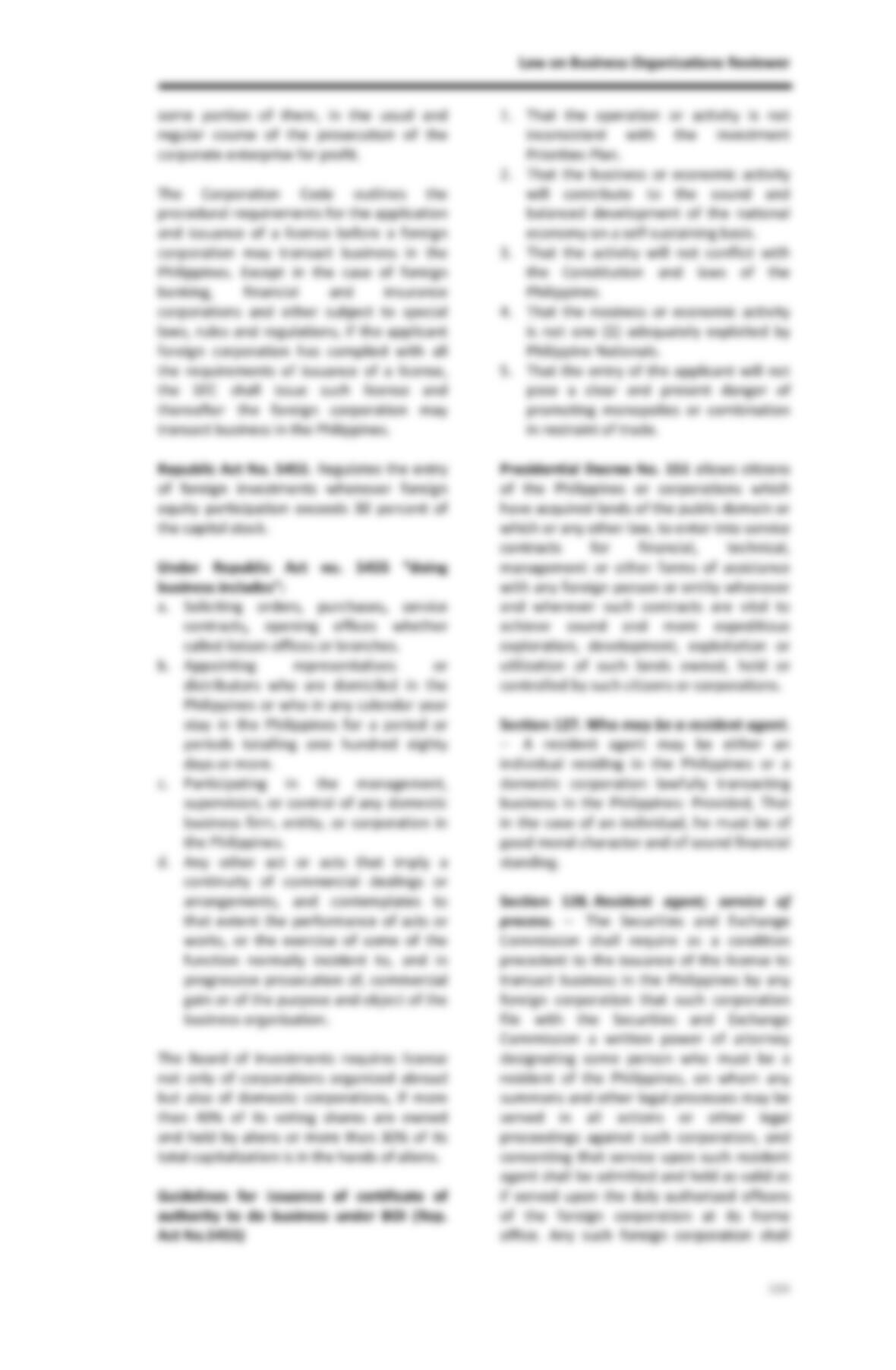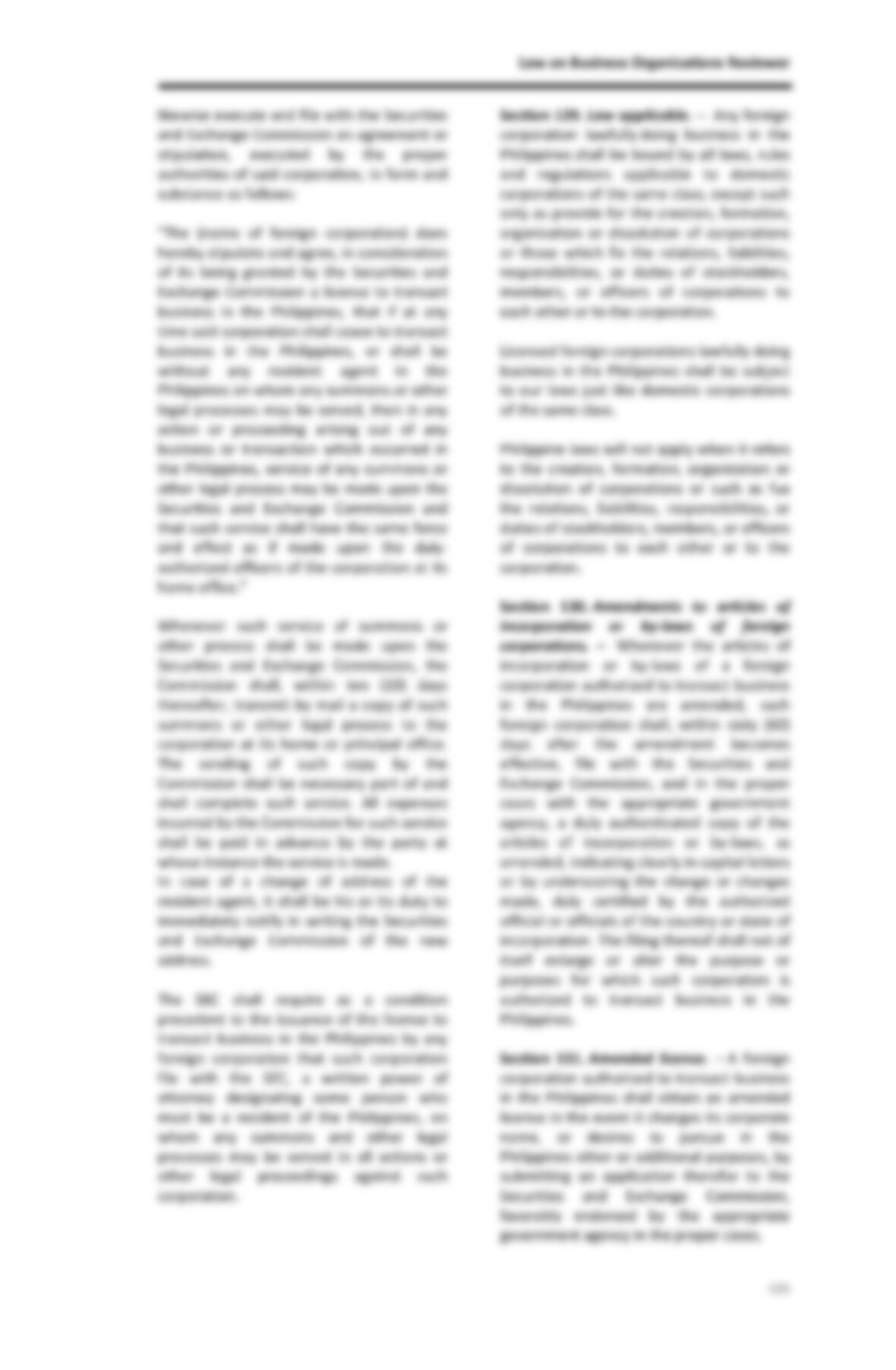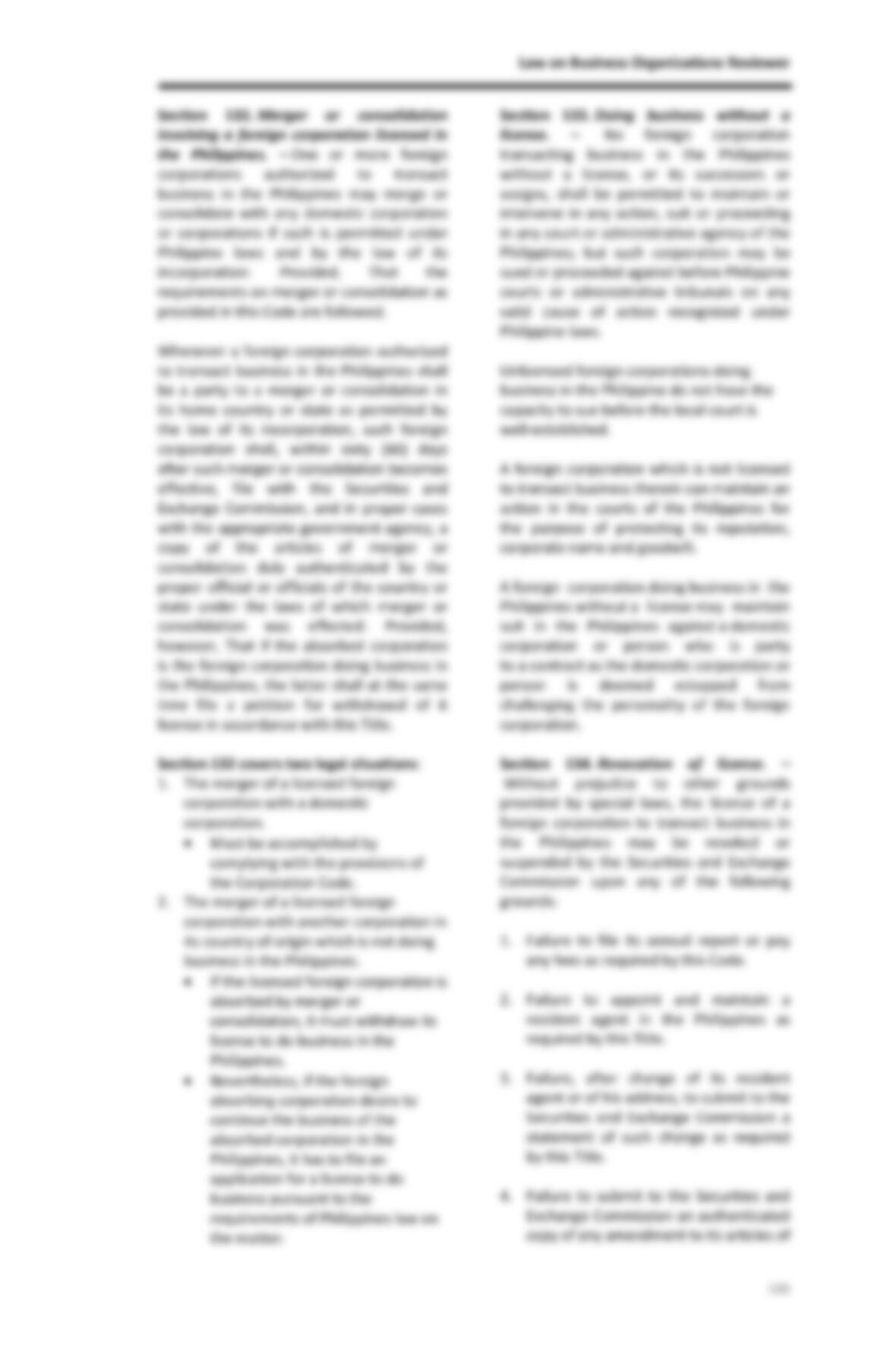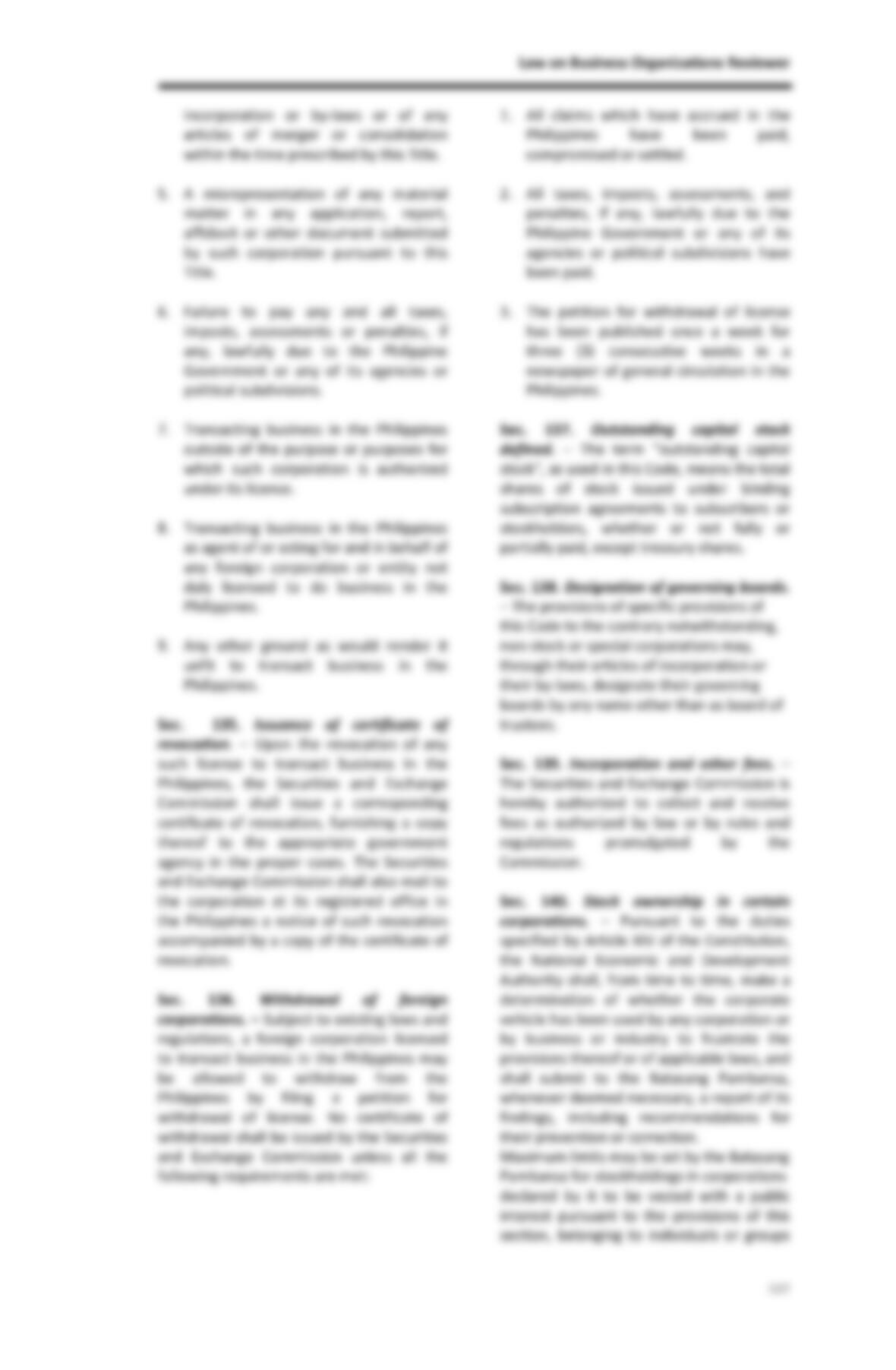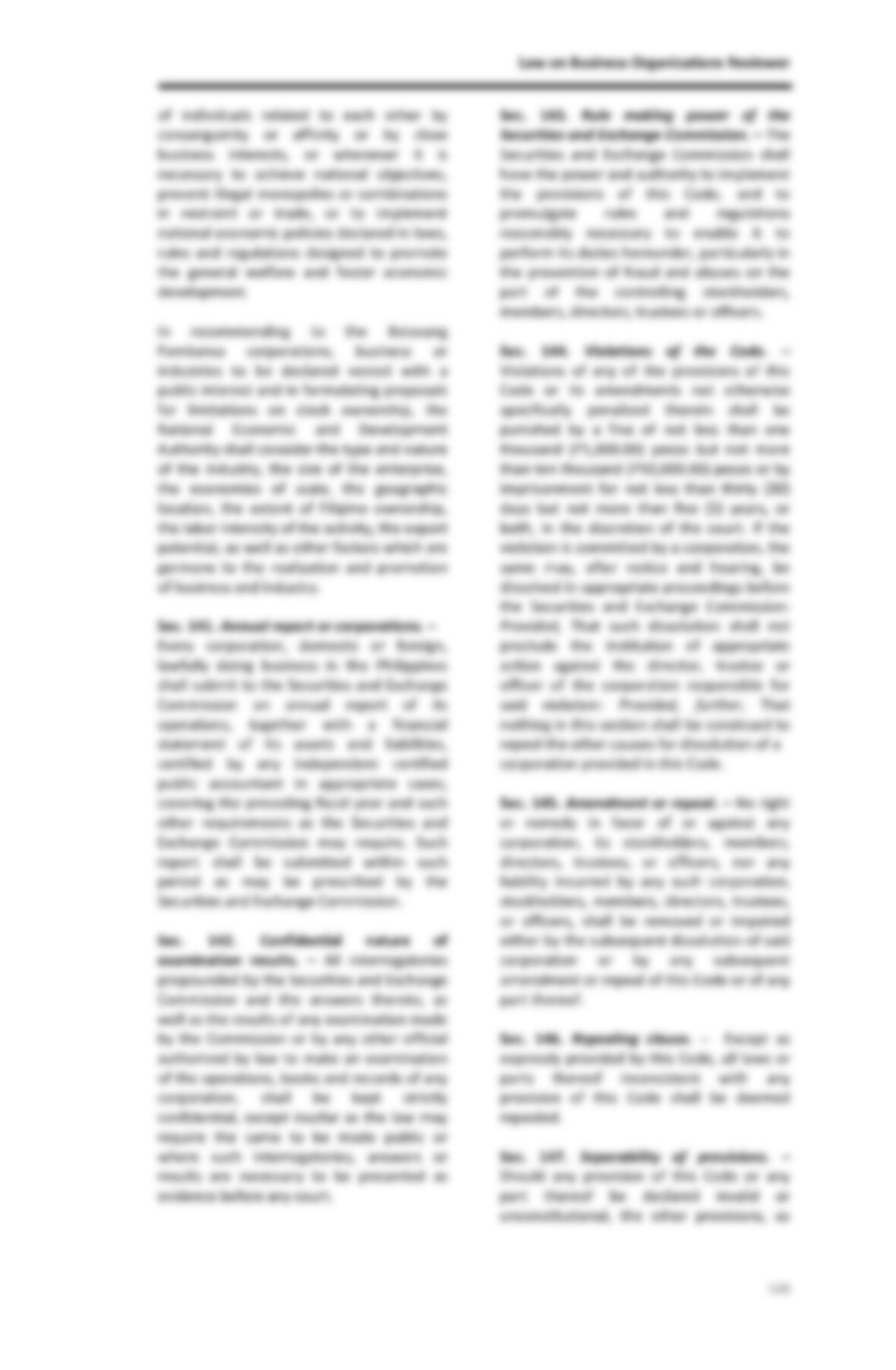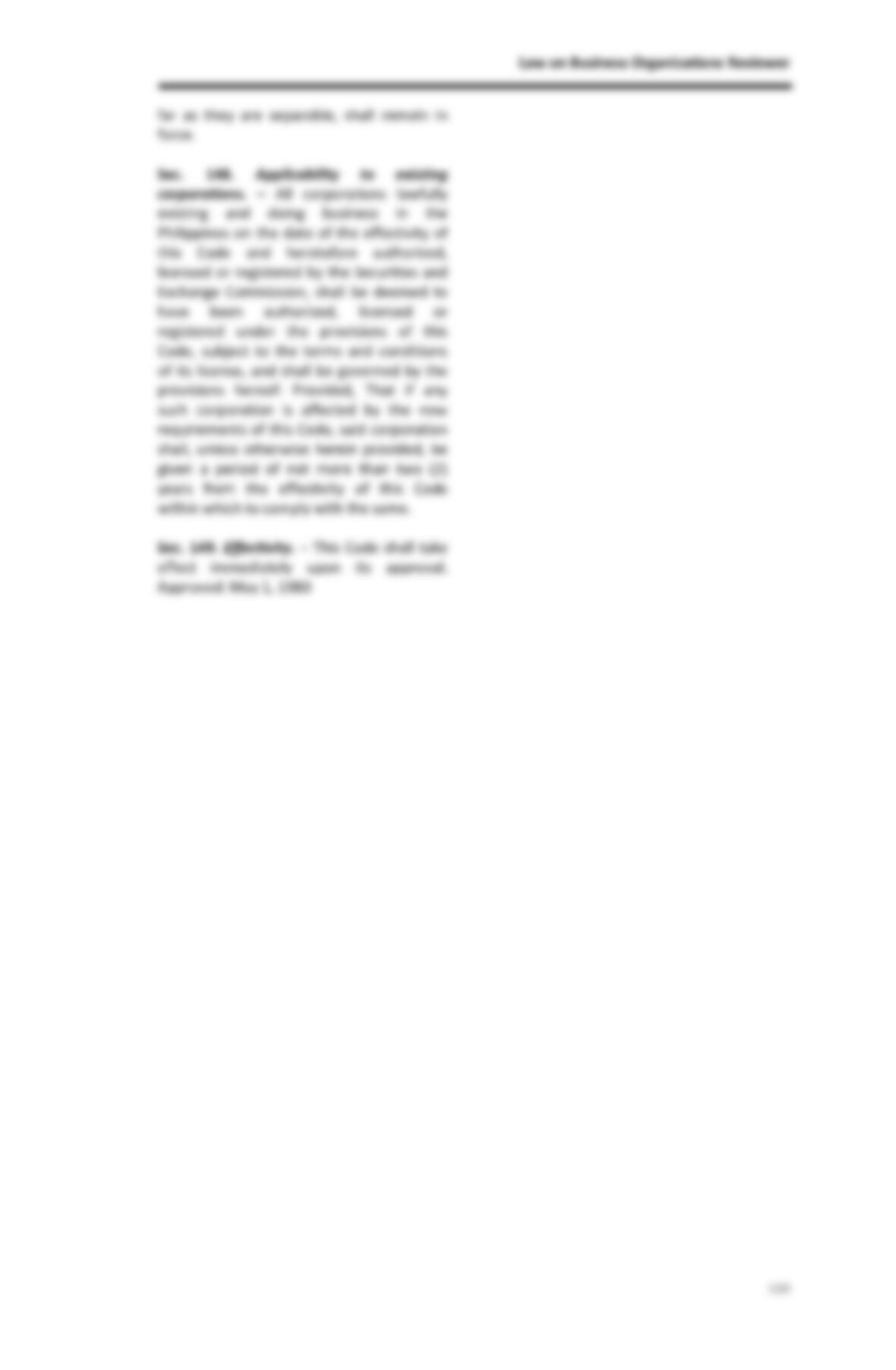Law on Business Organizations Reviewer
3
Reason for the rule
Partner interested in both failures and
successes; it is the chance of loss or gain
that characterizes a business. Where
the contract requires a given portion of
gross returns to be paid over, the portion is
paid over as commission, wages, rent, etc.
Where there is evidence of mutual
management
Where there is further evidence of mutual
management and control, partnership may
result.
Receipt of share in the profits strong
presumptive evidence of partnership
An agreement to share both profits
and losses tends strongly to establish the
existence of a partnership. It is not
conclusive, however, just prima facie and
may be rebutted by other circumstances.
When no such inference will be drawn
Under par. 4 of art. 1769, sharing of profits
is not prima facie evidence of partnership in
the cases enumerated under subsections (a)
– (e). In these cases, the profits are not
shared as partner but in some other
respects or purpose. The basic test
of partnership is whether the business is
carried on in behalf of the person sought to
be held liable.
Sharing of profits as owner
It is not merely the sharing of profits, but
the sharing of them as co-owner of the
business or undertaking that makes one
partner. Test: Does the recipient have an
equal voice as proprietor in the conduct and
control of the business? Does he own a
share of the profits as proprietor of the
business producing them? One must have
an interest with another in the profits of a
business as profits.
Burden of proof and presumption
The burden of proving the existence of a
partnership rests on the party having the
affirmative of that issue. The existence of
a partnership must be proved and will not
be presumed. The law presumes that those
acting as partners have entered into a
contract of partnership. Where the law
presumes the existence of partnership, the
burden of proof is on the party denying its
existence. When a partnership is shown to
exist, the presumption is that it continues
and the burden of proof is on the person
asserting its termination. One who alleges
partnership cannot prove it merely by
evidence of an agreement using the term
“partner”. Non-use of the term, however,
is entitled to weight. The question of
whether a partnership exists is not always
dependent upon the personal arrangement
or understanding of the parties. Parties
intending to do a thing which in law
constitutes partnership are partners.
Legal intention is the crux of partnership.
Parties may call themselves partners but
their contract may be adjudged something
quite different. Conversely, parties may
expressly state that theirs in not a
partnership yet the law may determine
otherwise on the basis of legal intent.
However, courts will be influenced to some
extent by what the parties call their
contract.
Tests and incidents of partnership
In determining whether a partnership
exists, it is important to distinguish
between tests or indicia and incidents of
partnership. Only those terms of a contract
upon which the parties have reached an
actual understanding, either expressly or
impliedly, may afford a test by which to
ascertain the legal nature of the contract.
Some of the typical incidents of a
partnership are:
1. The partners share in profits and losses.
2. They have equal rights in the mgt and
conduct of the partnership business.
3. Every partner is an agent of the
partnership, and entitled to bind the
others by his acts. He may also be liable
for the entire partnership obligations.
4. All partners are personally liable for
the debts of the partnership with their
separate property except that limited
partners are not bound beyond the
amount of their investment.
5. A fiduciary relation exists between
the partners.
6. On dissolution, the partnership is not
terminated, but continues until the
winding up of partnership is completed.
Such incidents may be modified by
stipulation of the partners.
Similarities between a partnership and a
corporation
1. Both have juridical personality separate
and distinct from that of the individuals
composing it;














































































